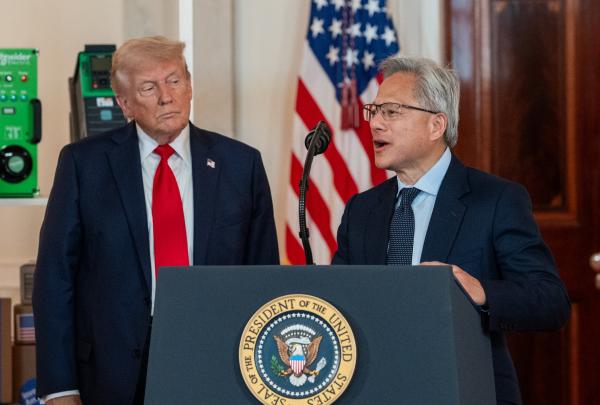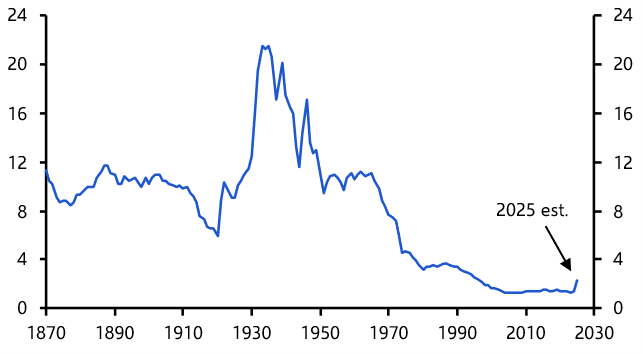Occam’s Razor is the idea that the simplest explanation is usually the best. It was in effect last week as the US and China wrapped up two days of trade talks in London. Both sides indicated progress had been made and President Trump concluded on social media that the state of the bilateral relationship “is excellent”.
But if the talks had such apparent success, why were so few details disclosed? The obvious answer is that there were none to disclose: dialogue is positive, but the gulf between Washington and Beijing is still wide and a deal to address the fundamental sources of tension in the bilateral relationship remains elusive.
In fact, the London talks did little more than take the bilateral relationship back to where it was this time last month, when both sides agreed in Geneva to temporarily slash tariffs pending talks on those more fundamental sources of tension. The round-tripping of US-China relations in that month serves to highlight three important takeaways.
Complicated, dynamic and fragile
First, the global trade system is simultaneously complicated, dynamic and fragile. Complicated because, whereas President Trump has tended to focus on tariffs as a primary tool of trade diplomacy, non-tariff barriers are arguably more important in today’s global economy. Notably, it was Washington’s concerns about Chinese restrictions on rare earths exports, and Beiing’s concerns about US sanctions on its firms, that forced both sides back to the negotiating table in London. This is worth keeping in mind if and when the US and other countries agree to roll back tariffs in the coming months.
The global trade system is dynamic because export flows have shown remarkable agility in the face of Trump’s tariffs onslaught. That huge surge in imports to the US in March was a sign of firms attempting to front-run tariffs and get their shipments into the country before the trade barriers were raised. Similarly, China’s latest trade data showed how its exporters are rerouting shipments through third-party countries that are subject to lower US tariffs (we estimate that rerouting allowed Chinese firms to offset more than half of the direct fall in their exports to the US during the first Trump trade war – our China-US Trade Rerouting dashboard is a unique, interactive guide to how this process is continuing to evolve). The global trading system’s agility will help to blunt the immediate impact of any increase in both tariff and non-tariff barriers.
But the global trading system is also fragile because it is only as strong as its weakest link – and globally integrated supply chains mean there are lots of links that can break. China’s restrictions on rare earths are a case in point. Global trade in rare earths is tiny, amounting to just $10bn last year (or less than 0.1% of total world trade). But they are a critical component in the production of everything from garage door openers to nuclear-powered submarines. Without them, downstream production of goods accounting for a much larger share of global trade would grind to a halt.
This is a neat illustration of the ‘O-ring theory’ of economic development, for which Michael Kremer won a Nobel Prize in 2019. The theory was named after the rubber seals whose failure led to the Challenger space shuttle disaster in 1986. Professor Kremer held up their malfunction as a demonstration of how systems are only as strong as their weakest link. The global trade system continues to provide supporting examples of these, from the Ever Given cargo ship’s blockage of the Suez Canal in 2021 to last summer’s CrowdStrike IT outage.
Still missing a plan
A second key lesson is that, while some of the Trump administration's grievances with the global trading system are legitimate, there appears to be no coherent plan to address them. President Trump has long been fixated on America’s trade deficit and the role that tariffs can play in reducing it. This runs against the grain of economic theory and, as I suggested earlier, overlooks the complexities of the modern global economy. At the same time, others in the administration – notably Marco Rubio – appear more focussed on taking a tougher line on China, advocating more aggressive steps like tightening visa restrictions and ending permanent normal trade relations, a legal distinction which gives US trade partners low-tariff access to its markets.
The central challenge facing economic policymakers is how to narrow global trade imbalances, but the Trump team’s efforts to impose an intellectual framework on this – including the so-called ‘Miran Plan’ – have failed to acknowledge that a smaller US trade deficit must entail a relative increase in US savings and a corresponding reduction in consumption. Tangible progress feels more elusive than ever: the One Big Beautiful Bill Act of tax cuts working its way through Congress would ensure the US runs a large external deficit for years to come.
Zhongnanhai won’t fold
The final lesson is that, while most countries will attempt to accommodate US demands on trade, China will push back. This reflects a deepening superpower rivalry between Beijing and Washington, and one that will increasingly reshape the global trading system. In the short term, we could, paradoxically, see a rebound in the volume of trade between the two countries as businesses use the window provided by last week’s ‘deal’ to stockpile strategically important goods (rare earths in the case of the US; high-tech goods in the case of China). But as our Chief Asia Economist Mark Williams notes, even if both sides agree a plan that makes the Geneva tariff reductions permanent and rolls back all the restrictions they have imposed on each other since then, there would still be significantly greater barriers between the world’s two largest economies than was the case at the start of the year. Over time, this will create a powerful incentive to decouple.
Whatever was achieved in London, there’s little sign of any attempt to address the deeper fractures in the US-China relationship. That leaves investors exposed to further flare-ups – and to renewed volatility across the global economy and markets.
In case you missed it:
We’re continuing to track developments in the Middle East. Our Friday notes highlighted the macroeconomic and financial market and commodities market implications, and we addressed initial client questions in an early online Drop-In briefing that day.
We don’t expect the Fed, the Bank of England or the Bank of Japan to move on rates this week, but the communications coming out of their respective policy meetings will be instructive. On the other hand, the Swiss National Bank decision on Thursday could be pivotal. We’ll be reviewing all of these in our regular central bank Drop-In after the BoE meeting on Thursday.
Chinese equities, along with those of the UK and Mexico, are among the most exposed if the trade escalates from here, says Markets Economist Giulia Bellicoso in her analysis of how global equities are being priced.





